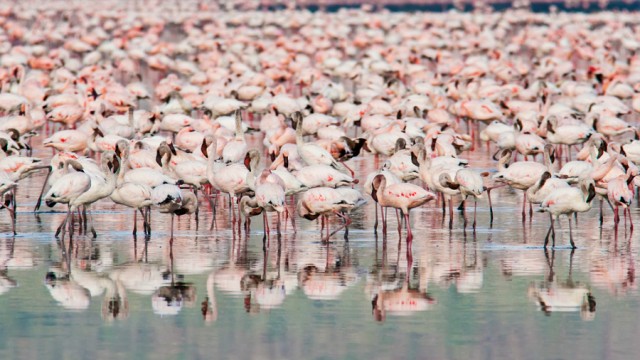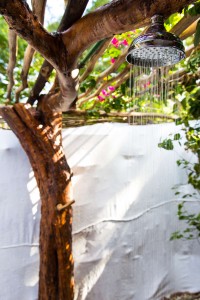Ask most people how they picture a Kenyan vacation, and chances are high that they’ll conjure the same generic images: seeing unique tropical wildlife on safari, lounging on a pristine beach, or perhaps some curio shopping.
This is all well and good as far as vacations go, but unfortunately it’s also everyone else’s version of the perfect vacation. If you opt for the standard itinerary — a safari trip coupled with a few days relaxation at the coast, and a day shopping in the big city — your time on the beach is more likely to involve an ocean of people, rather than an unobstructed view of the ocean, you’ll spend your game drive dodging other safari vehicles instead of quietly spotting lions, and you’ll be elbowing fellow tourists out of the way in the Maasai craft market.
Such congestion is naturally not conducive for an enjoyable vacation. Who wants to get up at the crack of dawn to get a poolside cabana or spot on the beach, or see more tourists than animals in a national park?
So how how can you make your Kenyan vacation better? Take a stroll off the beaten vacation path. Go to lesser-known places, and travel at different times from the masses.
Places to consider and why
Kenya offers a variety of recreational spaces that allow you to experience the traditional African vacation and escape the human traffic that you opted to leave at home, especially for city dwellers.
For example, if you’re willing to forego beachfront property for riverfront, try the Almond Resort in Garissa. This spacious, stately hotel, which fronts the lovely Tana River, offers both privacy and luxury and is only an hour and a half from the Rahole National Reserve.
One nice side effect of taking a vacation off the beaten path is that it lessens the strain on the natural resources of the busy areas. It is easy to overload the electrical, waste and water infrastructures of popular tourist destinations when millions converge upon them en masse. The huge surge in demand, especially during peak times, forces systems to work at a capacity that they simply were not designed to handle, and can divert resources from both tourists and locals.
Another example: Would you rather have an unplanned cold shower in a popular but crowded beachfront hotel in Lamu or Diani, or have a warm, relaxing soak in the tub at Ol Donyo Wuas Lodge in Chyulu Hills Pational Park with a stunning view of African wildlife?
Going to an out-of-the-way spot also means you have the opportunity to experience activities that are not easily associated with the more mainstream locations. For example, viewing the flamingos of Lake Naivasha is a perk for guests of hotels and lodges in Naivasha or nearby Nakuru, while whitewater rafting is a big attraction in Sagana, which hosts the the roiling rapids of the Sagana River. Para-gliding can only become a reality if you are willing to bypass Mombasa and Masai Mara and head to the Kerio Valley instead.
Accommodation
There are three major types of accommodation that you are likely to find in more out of the way locations. The first is the local “rustic” hotels, often known to cater to backpackers and other such niche customers who are not particularly attached to the five star ideal.
These are generally limited in the number of visitors they can accommodate, and are largely marketed by word of mouth. An example of this in Kenya would be the Distant Relatives Ecolodge, nestled in a private area of Kilifi. Such facilities offer niche adventures like extreme sports, and boast a level of peace and quiet difficult to duplicate in larger hotels. However, sometimes they are located in remote areas, accessible via dirt roads, and may lack amenities that more upscale establishments have.
The second major type of accommodation is the traditional hotel. These are often found well away from the ‘cliché’ tourist destinations, and are often large enough to necessitate the development of support infrastructure, such as roads and water or power lines. These offer travelers the relative seclusion of their rustic cousins but coupled with the amenities you would generally expect from the average hotel.
The third and rarer accommodation facility is the luxury lodge. These are designed for travelers with deeper pockets, who prefer their privacy to come with every comfort imaginable. These often have private airstrips or feeder roads maintained by the hotel itself and are often quite exclusive.
Depending on your taste for out-of-the way adventure and your budget, selecting accommodations for your Kenyan vacation should be fairly simple. Most of the establishment types listed above have an online presence that makes them easy to access or contact, allowing you to get a clear idea of the surroundings and make your decision.
The domino effect
By expanding your vacation choices off the beaten path, you do a great service to the country, fulfilling your duty as a responsible tourist.
Tourism generates a significant number of jobs in Kenya. These jobs are usually concentrated around areas that tourists are likely to frequent or stay at over their vacation, so by going to less-travelled areas, you are expanding employment opportunities for those without the good fortune to live in touristic areas.
Similarly, development projects that aim to improve the country, such as construction of roads, extension of water or power lines and the presence of government health care tend to follow the winds of tourism.



